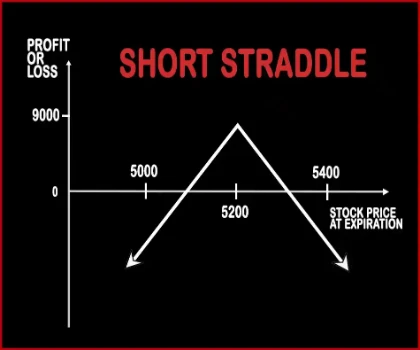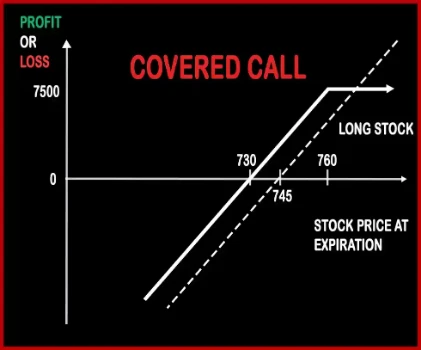Compare Strategies
| SHORT STRADDLE | COVERED CALL | |
|---|---|---|

|

|
|
| About Strategy |
Short Straddle Option strategyThis strategy is just the opposite of Long Straddle. A trader should adopt this strategy when he expects less volatility in the near future. Here, a trader will sell one Call Option & one Put Option of the same strike price, same expiry date and of the same underlying asset. If the stock/index hovers around the same levels then both the options will expire worthless an |
Covered Call Option StrategyMr. X owns Reliance Shares and expects the price to rise in the near future. Mr. X is entitled to receive dividends for the shares he hold in cash market. Covered Call Strategy involves selling of OTM Call Option of the same underlying asset. The OTM Call Option Strike Price will generally be the price, where Mr. X will look to get out o .. |
SHORT STRADDLE Vs COVERED CALL - Details
| SHORT STRADDLE | COVERED CALL | |
|---|---|---|
| Market View | Neutral | Bullish |
| Type (CE/PE) | CE (Call Option) + PE (Put Option) | CE (Call Option) |
| Number Of Positions | 2 | 2 |
| Strategy Level | Advance | Advance |
| Reward Profile | Limited | Limited |
| Risk Profile | Unlimited | Unlimited |
| Breakeven Point | Lower Breakeven = Strike Price of Put - Net Premium, Upper breakeven = Strike Price of Call+ Net Premium | Purchase Price of Underlying- Premium Received |
SHORT STRADDLE Vs COVERED CALL - When & How to use ?
| SHORT STRADDLE | COVERED CALL | |
|---|---|---|
| Market View | Neutral | Bullish |
| When to use? | This strategy is work well when an investor expect a flat market in the coming days with very less movement in the prices of underlying asset. | An investor has a short term neutral view on the asset and for this reason holds the asset long and has a short position to generate income. |
| Action | Sell Call Option, Sell Put Option | (Buy Underlying) (Sell OTM Call Option) |
| Breakeven Point | Lower Breakeven = Strike Price of Put - Net Premium, Upper breakeven = Strike Price of Call+ Net Premium | Purchase Price of Underlying- Premium Received |
SHORT STRADDLE Vs COVERED CALL - Risk & Reward
| SHORT STRADDLE | COVERED CALL | |
|---|---|---|
| Maximum Profit Scenario | Max Profit = Net Premium Received - Commissions Paid | [Call Strike Price - Stock Price Paid] + Premium Received |
| Maximum Loss Scenario | Maximum Loss = Long Call Strike Price - Short Call Strike Price - Net Premium Received | Purchase Price of Underlying - Price of Underlying) + Premium Received |
| Risk | Unlimited | Unlimited |
| Reward | Limited | Limited |
SHORT STRADDLE Vs COVERED CALL - Strategy Pros & Cons
| SHORT STRADDLE | COVERED CALL | |
|---|---|---|
| Similar Strategies | Short Strangle | Bull Call Spread |
| Disadvantage | • Unlimited risk. • If the price of the underlying asset moves in either direction then huge losses can occur. | • Unlimited risk, limited reward. • Inability to earn interest on the proceed used to buy the underlying stock. |
| Advantages | • A trader can earn profit even when there is no volatility in the market . • Allows you to benefit from double time decay. • Trader can collect premium from puts and calls option . | • Profit from option premium, rise in the underlying stock and dividends on the stock. • Allows you to generate income from your holding. • Profit when underlying stock price rise, move sideways or marginal fall. |